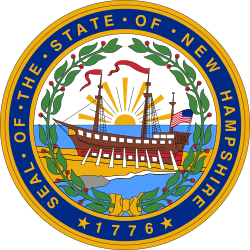General election
On election day, March 9, 1790, former Acting President John Pickering won the popular vote by a margin of 820 votes against his foremost opponent Joshua Wentworth. But because no candidate received a majority of the popular vote, a separate election was held by the New Hampshire General Court, which chose Anti-Federalist candidate Josiah Bartlett as the winner, despite Bartlett having only received 21.59% of the vote and having placed third. Bartlett thereby gained Anti-Federalist control over the office of President. Bartlett was sworn in as the fourth President of New Hampshire on June 5, 1790. [2]
This page is based on this
Wikipedia article Text is available under the
CC BY-SA 4.0 license; additional terms may apply.
Images, videos and audio are available under their respective licenses.


